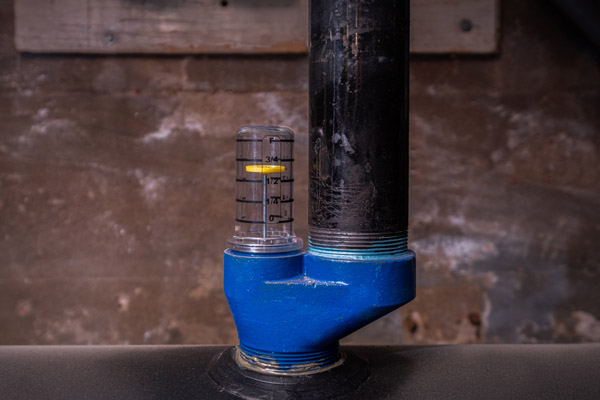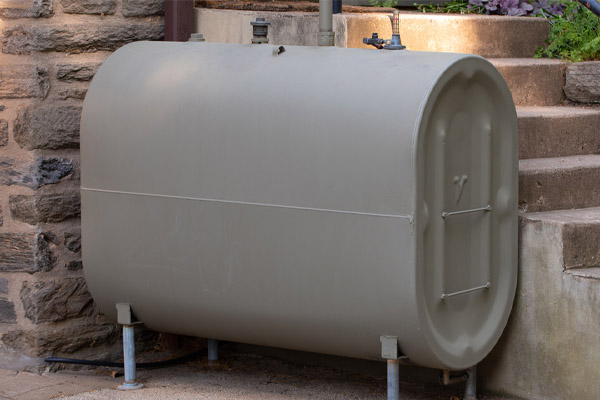Contents
Homes equipped with heating oil systems have always been prepared to face the cold months. Because the fuel is kept inside their own tank, they are not reliant on a continual supply of fuel from other sources to operate. When compared to residences that rely on natural gas, they are not as susceptible to supply disruptions. But homeowners must ensure that their tank is large enough to accommodate their heating requirements. They must also make a habit of checking the amount of fuel left in the oil tanks on a regular basis using the heating oil tank gauge. Having this information will allow them to organize heating oil deliveries in a reasonable time frame.
The Fundamentals of Float Gauges in an Oil Tank

The design of oil tanks hasn’t developed much in the previous century. It’s straightforward and effective. There’s the tank’s primary body, which is typically a welded steel container with rounded sides. A fill line is provided for adding extra oil, and a vent pipe is provided for releasing excess air. A whistle (vent alarm) is located beneath the vent pipe and emits a sound as air leaves. The oil is moved from the tank to the burner through oil feed lines. Lastly, there’s the float gauge, which has a hinged arm on the bottom whose end floats on the oil’s surface. As the oil is used up, the arm lowers, moving the gauge indicator disc with it.
Locating the Property’s Oil Tank

Identifying the oil tank on your property is necessary if you have recently acquired a home and are trying to read the oil tank gauge on that property. Because the tank is elevated above the ground, this is sometimes a simple task. In certain cases, it may be kept buried away in a basement, and in some cases, your property may even include an underground oil storage tank. Ensure that the exterior pipes and float gauge are easily accessible. Tanks are big containers that can hold up to 275 gallons or even more of heating oil. These are not completely filled for the sake of safety. They typically contain between 225 and 250 gallons of oil. The remainder of the tank’s volume is taken up by air. This helps heating oil to expand without difficulty.
How to Read the Float Gauge in the Oil Tank
Now that you’ve located the oil tank, pay attention to the gauge positioned at the top of it. Look for a clear cylindrical device with an indicator disc. The typical markings include F for Full, 3/4, 1/2, 1/4, and E for Empty. Check the disc to see where it is located to determine the level of your heating oil tank. Those who are unfamiliar with this type of gauge may be perplexed as to how to read it. They usually can’t decide whether to follow the disc’s top or bottom. It doesn’t matter in reality because the gauge isn’t a precision instrument. Simply examine where the disk’s center is in relation to the markings.
Calculating How Much Fuel Is Left In Your Heating Oil Tank
The next step is to calculate the number of gallons left after observing the estimated fuel level within the tank. This will have to be done by hand using a basic formula. To assess the tank’s gasoline capacity, first look at its size. Many homes, for example, have a 275-gallon tank. Because it can’t be completely filled, it normally only holds 240 gallons of heating oil and the rest is occupied by air. As a result, the float gauge that reads 1/4 has just 60 gallons remaining (240 multiplied by 0.25). This will still last a few weeks, however, it is preferable to get a refill immediately rather than waiting for the tank to run out. As a general rule, plan your heating oil delivery when the tank is around 30% full.
Checking for Gauge Failure in an Oil Tank
Only an approximation of the existing fuel level may be provided by the float gauge. It may even fail to provide a good estimate if the float mechanism has malfunctioned. Removing the outer shell and pushing the float downward is one method to check. The float should rise on its own after you release it. If it does not, you have a faulty float that requires expert repair. This can occur as a result of normal wear and tear on older tanks. Also, the arm beneath the tank might swivel and become jammed against the side of the tank. Finally, floats might become coated in thick muck, which weights them down and prevents them from functioning correctly.
Overcoming the Challenge of a Broken Oil Tank Gauge
If the gauge on your tank is broken, you might utilize an alternate method of determining the fuel level. This also holds for tanks that were never equipped with a float gauge. A long, thin stick that fits inside the hole is required for manual measuring. The length should be sufficient to cover the tank’s height. Dip the stick immediately following a refill to determine the location of the fuel’s top when the tank is full. Make a note of it. Later on, utilize the same stick to determine the fuel level’s depletion.
Duration of a Typical Heating Oil Tank
A full tank will often last quite some time. The precise length will be determined by:
- tank size
- temperature settings for the inside
- size of a house
- regional climate
- insulating factor
- use frequency
- their heating system’s efficiency
- additional factors
The majority of households will use heating oil solely to keep particular areas warm. Others will generate enough heat to heat the entire house. Homeowners may track their annual fuel use to have an idea of their yearly heating oil needs.
Conclusion
Central Maryland and southern Pennsylvania winters can be brutal. Do not allow your heating oil levels to go near zero during the winter months. Keep an eye on your tank’s float gauge and schedule a refill as soon as it dips below one-third of its capacity. You will have to do this in order to keep your house cozy and comfy.
Contact Tevis Energy For Your Home Heating Oil Needs

Tevis Energy is a trustworthy HVAC company and heating oil delivery company that services central Maryland and southern Pennsylvania. Our company offers affordable and the most competitive heating oil prices in the area. Our goal is to provide you with excellent products and services. When you choose us to be your oil supplier, you can rest easy knowing that you will have correct and prompt heating oil deliveries at the best possible prices. Furthermore, we offer various heating oil delivery plans and financing options, as a way to customize your oil deliveries. Be sure to call us today to learn more.
Tevis Energy has certified and highly trained HVAC technicians to cater to all your heating and cooling needs. We guarantee that each of our techs has the experience, skills, and knowledge to provide excellent HVAC services. Our team can assist you with installations, repairs, maintenance, and much more. Our superior HVAC solutions always come at affordable costs.
Call us today to learn more about the products and services our company offers. We provide free, in-home estimates.
You can click here to contact us now or call us at (410) 876-6800 to find out more!